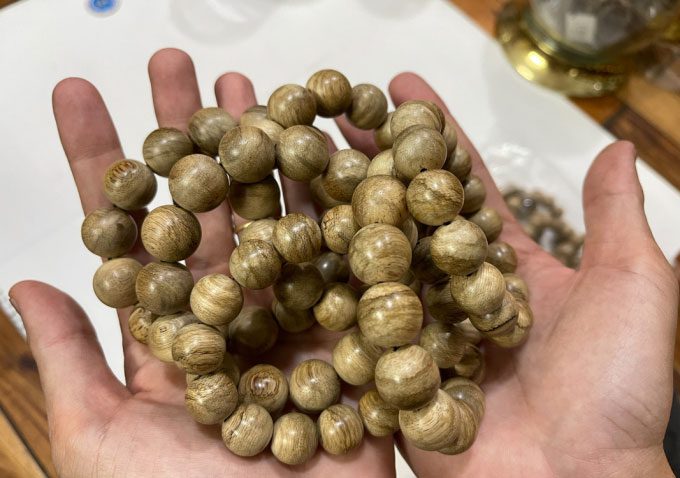Agarwood is a product that is easily counterfeited, but consumers can detect it through its characteristics such as color and aroma.
Agarwood is not a type of tree but is formed from a wound on a tree belonging to the Aquilaria family. From the wound, the tree secretes an oil to protect itself, and over a long period, this oil accumulates to create agarwood, which has a dark brown or grayish color and a distinctive mild fragrance.
There are two types of agarwood: natural and artificial, with natural agarwood being more expensive as it is formed naturally over several decades to hundreds of years.
Artificial agarwood is created through human intervention by mechanically wounding the tree, using chemical stimulation, and costs several million VND (depending on the type).
Mr. Bient Quoc Dung, president of the Agarwood Association of Khanh Hoa, stated that natural agarwood is currently very rare due to the shrinking area of natural forests.
Agarwood can have different names based on the level of oil saturation, color, aroma, shape, weight, and origin, such as: Black agarwood, island agarwood, Trai agarwood, green ant agarwood, and lumpy agarwood (ruc agarwood, sinh agarwood).
Currently, there are no regulations from the government or any organization regarding the classification standards and quality assessment of agarwood. In transactions, classification is largely based on perception and experience.

Bracelet made from natural agarwood. (Photo: Bui Toan)
According to Mr. Dung, to identify real agarwood, buyers should carefully observe the wood grain patterns on the piece (or bead) of agarwood. If the grain is natural, with flexible lines, uneven bumps and dips, it is genuine agarwood.
Both natural and artificial agarwood emit a mild, sweet fragrance, which is pleasant to smell. When burned directly, it releases a distant fragrant aroma, producing white smoke that dissipates quickly.
In terms of color, genuine agarwood will have a blend of black, white, and yellowish-brown hues, without any completely uniform color. In addition, agarwood with an oil content of over 25% can sink in water. High-quality agarwood can achieve an oil content of 60-80%, and when touched, buyers can still feel its natural smoothness.
On the other hand, fake agarwood appears shiny black and has a very strong artificial scent (due to chemical additives); when burned, the smell is overpowering and unpleasant.
Genuine agarwood bracelets, when newly produced, will not have particularly vibrant colors, but if crafted into jewelry (bracelets, necklaces) and worn for a long time, they will develop a certain depth of color and shine. In contrast, fake agarwood will lose its scent after some time, and in some cases, may cause itching or swelling of the hands.
“Bracelets made from natural agarwood advertised for under 10 million VND are also a factor to be suspicious of,” Mr. Dung said.
Currently, some establishments selling agarwood advertise Ky Nam bracelets (a special and rare type of agarwood) for just a few tens of millions of VND. “Buyers should be cautious because this is completely unreasonable,” Mr. Dung warned.
Ky Nam agarwood is formed after hundreds to thousands of years and only appears in Vietnam. Obtaining a piece of Ky Nam as small as a fingertip is extremely difficult. To date, this type of agarwood is virtually no longer found in nature.
“One kilogram of Ky Nam is priced at around 30 billion VND, so any product claiming to be ‘made from Ky Nam’ priced in the tens of millions is definitely 100% fake,” the president of the Agarwood Association of Khanh Hoa stated.
To feel more secure when purchasing agarwood, buyers should leverage relationships such as acquaintances or consult experts to find reputable sources, or they can reach out to some establishments within the Agarwood Association of Khanh Hoa for references.



















































